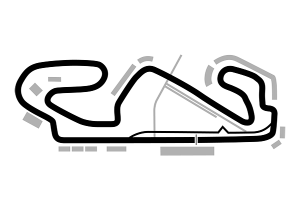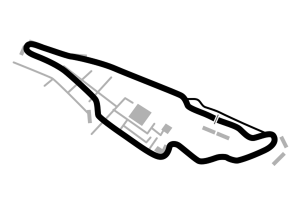The world of F1 is a thrilling combination of high-speed racing and cutting-edge technology. It's a sport where the most skilled drivers in the world push their abilities to the limit, battling for the top spot on the podium.
At the same time, an intense engineering war is going on behind the scenes, where teams spend countless hours designing the quickest machines that adhere to the strictest regulations, courtesy of the FIA.
However, the vast array of terms and jargon can be confusing to those who have just started to follow the sport.
Don't worry, though, because this article is here to help. We'll break down some of the most common F1 terms you will hear from drivers, teams and commentators during the season so that you can watch the races like a pro!
F1 Terms - A Glossary
Formula One: Let's start with the first question that might pop up in your mind: What is "Formula One"?
Well, "Formula" refers to a set of strict rules - like a recipe book for building an F1 car that every team must follow, while "One" represents the pinnacle of open-wheel motor racing.
FIA: The Fédération Internationale de l'Automobile is the governing body of F1 and other international racing series and is responsible for setting the rules and regulations that every team and driver must follow.
Drivers' Championship: The individual championship in F1, where drivers earn points throughout the season based on their race finishes. The driver with the most points at the end of the season is crowned the world champion.
F1 greats Michael Schumacher and Lewis Hamilton currently share the record for most drivers' championships, with a staggering seven titles each.
Constructors' Championship: A battle between F1 teams to accumulate the most points throughout the season. Points are awarded to both drivers in each team based on their race finishes, and the team with the most points at the end of the season wins the constructors' championship.
Scuderia Ferrari currently leads the pack with 16 titles, followed by Williams Racing with nine titles.
Cost cap: A financial regulation limiting the amount each team can spend on developing and running their cars, aiming to level the playing field and prevent excessive spending.
107% rule: A rule which requires all cars to qualify within 107% of the fastest time set in Q1 to be eligible to start a grand prix. If a driver fails to do so, they will be automatically excluded.
Free practice session: Three one-hour sessions (two on Friday, one on Saturday) where drivers get familiar with the track and fine-tune their car setups for qualifying and the race. These sessions are not competitive, but valuable for data gathering and preparation.
Qualifying: A timed session held on a Saturday afternoon (except at sprint race weekends) to determine the starting grid for the main race. Drivers push their cars to the limit in an attempt to set the fastest lap time. The driver with the fastest lap starts first, followed by the second-fastest, and so on.
Race: The main event of an F1 weekend, where all 20 drivers compete for the win or a podium finish over a set number of laps around a specific circuit. Races generally last around 1.5 to 2 hours.
DID YOU KNOW? The shortest race in F1 history was the 2021 Belgian Grand Prix, which lasted three minutes and 27 seconds, and the longest race was the 2011 Canadian Grand Prix, which lasted four hours, four minutes, and 39 seconds.
READ MORE: RECORD-BREAKER: What was the LONGEST race in F1 history?
Sprint race: A shorter, faster race introduced in 2021 at select Grand Prix weekends. Sprint races are about 1/3 the distance of a traditional F1 race and award points to the top 8 finishers.
Formation Lap: The slow lap before the start of the race which allows drivers to warm up the tyres and line up in order on the grid.
Starting grid: The order in which cars start the race, determined by qualifying times. The driver with the fastest qualifying lap starts first, followed by the second-fastest, and so on.
Points system: The system by which points are awarded to drivers and constructors based on their race finishes. The driver who finishes first in a race gets 25 points, the second gets 18, the third gets 15, and so on.
Pole position: The first position on the grid at the start of the race, earned by the driver with the fastest qualifying lap time.
Podium: The coveted platform for the top three finishers, where champagne showers and national anthems commemorate a driver's victory.
Grand Chelem (Grand Slam): When a driver takes pole position in qualifying, leads every lap of the race, sets the fastest lap, and secures the win.
The legendary Jim Clark achieved this rare feat eight times, while Lewis Hamilton has achieved it six times.
Pits: An area at the start/finish straight where cars can change tyres or repair damages. Pit stops are crucial, and a second can make or break a driver's race.
READ MORE: F1 Explained: What is a pit stop and how does it work?
Undercut and overcut: Pit stop strategies to gain an advantage over rivals. Undercut means pitting earlier than expected to jump ahead of a rival during their pit stop, while overcut means delaying the pit stop for fresher tyres later in the race to overtake.
READ MORE: Pit stop strategy explained: How the undercut and overcut work in F1
Chicane: A series of tight, consecutive corners in alternate directions
designed to slow down cars and add a technical challenge to the track.
Hairpin: A very tight corner that requires the driver to turn sharply.
DID YOU KNOW? The slowest corner on the F1 calendar is the Fairmont Hairpin in Monaco, with drivers inching around at just 30mph.
Slipstreaming: Slipstreaming, which occurs in straights, is an aerodynamic technique where a following car utilises the low-pressure zone created by the leading car to reduce air resistance and gain extra speed.
As the leading car races at high speeds, its wings and bodywork push air away, creating a low-pressure area directly behind it.
Dirty air: The turbulent air left behind a leading car in corners, which negatively affects the following car's grip and reduces its aerodynamic performance.
Clean air: Non-turbulent air that is experienced when a car is not directly behind others, providing ideal racing conditions.
Downforce: A vertical force generated by the car's wings and underbody, pushing the car down onto the track for increased grip and cornering speeds.
Drag: The force acting against a car's forward motion created by air resistance. Imagine it like a big hand pushing against the car and slowing it down.
DRS: Introduced in 2011, the drag reduction system is a game-changer in F1. This aerodynamic trickery involves a movable flap on the rear wing, which, when activated, reduces drag and boosts top speed.
This gives the chasing car a temporary power-up, aiding overtaking on designated sections of the track. However, DRS can only be used when the pursuing car is within one second of the car in front.
ERS: Energy Recovery System is a system that recovers waste energy from the braking system and the turbocharger. This energy is stored for later use as an additional power boost.
G-force: In F1, 'G-force' refers to the immense forces experienced by drivers during rapid acceleration, deceleration, and cornering.
When taking corners, drivers can experience up to 6G—six times the force of gravity—which exerts significant pressure on their bodies. That's why drivers undergo extensive training to build up their endurance and stamina to withstand these extreme G-forces.
Sandbagging: Sandbagging is a strategy in F1 in which a team or driver deliberately hides their car's true pace and performance during sessions to trick their rivals and lull them into a false sense of security.
Marbles: Small pieces of rubber accumulate on the racing line over time due to tyre wear and degradation. Running over marbles can cause cars to lose grip and potentially spin out.
Apex: The apex is the innermost point of the driving line taken through a corner. Hitting the apex right unlocks the fastest path, letting drivers maintain the highest speed through the corner.
Backmarker: This term is used to describe a driver who is at the back of the field, typically when the race leaders are coming up behind them. When a faster car approaches from behind, a blue flag is waved to alert the backmarker to move over and allow the faster car to pass.
Paddock: The area housing team garages and other facilities used by teams and personnel during race weekends.
Cockpit: The enclosed driver's compartment in an F1 car, equipped with all the controls and information displays needed for racing.
Safety car: A vehicle deployed during accidents or dangerous conditions to slow all the cars down and ensure safety.
Virtual safety car (VSC): A system used to slow down cars when there is an incident that does not require the physical safety car to be deployed on the track.
READ MORE: F1 Safety Car explained: Full or virtual, and how it all works
Halo: A titanium ring structure surrounding the driver's head, offering additional protection in case of accidents.
Since its introduction in 2018, the halo has been credited with saving multiple drivers' lives, including Lewis Hamilton at the 2021 Italian Grand Prix and Zhou Guanyu at the 2022 British Grand Prix.
Tyres: The rubber-coated wheels of an F1 car, crucial for grip, traction, and handling. Different compounds offer varying performance for specific weather conditions and lap strategies.
"Box, box": A radio message from the team to a driver instructing them to pit immediately. Box comes from the German boxenstopp, meaning pit stop.
Double stack: When a team carries out a pit stop for both cars, one right after the other.
Understeer and oversteer: These are two common terms used in F1 to describe the behaviour of a car when it loses grip when going into a corner.
Understeer occurs when the front tyres lose grip before the rear tyres. This means that the car doesn't turn as much as the driver wants it to, pushing straight ahead instead of following the intended cornering line.
Oversteer is the opposite of understeer. It happens when the rear tyres lose grip before the front tyres. This causes the back of the car to slide out, making it more difficult to control.
Track limits: Track limits are the white lines that define the edge of the circuit, setting a boundary that drivers are not allowed to cross. Crossing them results in warnings or penalties.
Sausage kerbs: Raised, bumpy sections on the track edges designed to deter drivers from gaining an unfair advantage by exceeding track limits.
Parc ferme: Means 'closed park' in French, parc ferme is an area where cars are kept after qualifying to ensure they haven't been illegally modified before the race.
DNF: Short for Did Not Finish, is a term used to describe a driver who has retired from the race. There are many reasons why a driver might DNF, such as a mechanical failure or a crash.
DID YOU KNOW? Riccardo Patrese and Andrea de Cesaris share the record for the most retirements in F1 history, with 147 each!
DSQ: This stands for "disqualified". It is a term used to describe a driver who has been disqualified from the race for technical breaches.
Lewis Hamilton and Charles Leclerc were both disqualified from the 2023 United States Grand Prix, losing their respective P2 and P6 finishes after a post-race check revealed that the skid blocks on their cars were excessively worn out.
Skid block: A plank placed underneath every F1 car from front to back. It was introduced in 1994 to maintain a minimum ride height and prevent cars from being too low to the ground.
Yellow flag: When a yellow flag is waved, it means that a hazard is present on or near the track. Drivers must reduce speed and be prepared to change direction. Overtake is prohibited.
A single yellow flag indicates a less severe hazard, like debris, for example, while a double yellow flag signals a significant danger, like an accident, and the track is partially or completely blocked.
Green flag: The green flag is used in various situations, including at the start of the race. It also signals the end of any danger previously indicated by yellow flags.
Red flag: The red flag means an immediate halt; a big crash, bad weather, or another serious danger requires all cars to slow down and return to the pit lane.
Chequered flag: The black-and-white flag waved at the finish line to signal the end of the race.
Related






 GP AUSTRALIA
14 - 14 Mar
GP AUSTRALIA
14 - 14 Mar

 GP CHINA
21 - 21 Mar
GP CHINA
21 - 21 Mar

 GP JAPAN
4 - 4 Apr
GP JAPAN
4 - 4 Apr

 GP BAHRAIN
11 - 11 Apr
GP BAHRAIN
11 - 11 Apr

 GP SAUDI ARABIA
18 - 18 Apr
GP SAUDI ARABIA
18 - 18 Apr

 GP USA
2 - 2 May
GP USA
2 - 2 May

 GP ITALY
16 - 16 May
GP ITALY
16 - 16 May

 GP MONACO
23 - 23 May
GP MONACO
23 - 23 May

 GP SPAIN
30 - 30 May
GP SPAIN
30 - 30 May

 GP CANADA
13 - 13 Jun
GP CANADA
13 - 13 Jun


























 Grand Prix of Austria 2025
Grand Prix of Austria 2025  Grand Prix of Belgium 2025
Grand Prix of Belgium 2025  Grand Prix of Hungary 2025
Grand Prix of Hungary 2025  Grand Prix of Azerbaijan 2025
Grand Prix of Azerbaijan 2025  Grand Prix of Singapore 2025
Grand Prix of Singapore 2025  Gran Premio de la Ciudad de Mexico 2025
Gran Premio de la Ciudad de Mexico 2025  Grande Prêmio de São Paulo 2025
Grande Prêmio de São Paulo 2025  Qatar Grand Prix 2025
Qatar Grand Prix 2025  Grand Prix of Abu Dhabi 2025
Grand Prix of Abu Dhabi 2025 